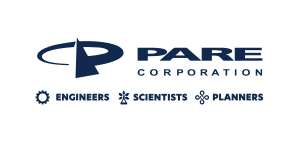The South Fork Dam Breach and Johnstown Flood of 1889: A Civil and Dam Engineering History of the USA’s Deadliest Dam Failure: Agenda
May 13, 2025
12:00 PM - 2:00 PM Eastern
- Topic overview
- The Western Reservoir and its dam
- Transportation through the Allegheny Mtns. – the Main Line of Public Works.
- 1830s: Engineering design of the Western Reservoir and dam.
- 1840s: Constructing the Western Reservoir and dam: Delays, obstacles, and techniques.
- The finished Western Reservoir and dam – engineering features.
- Obsolescence, 1862 breach, and abandonment of the Western Reservoir and dam.
- Lake Conemaugh and the South Fork Dam
- The South Fork Fishing and Hunting Club – captains of industry.
- The Club’s problem-ridden reconstruction of the dam.
- The Club ignores engineers’ warnings and other signs of trouble.
- A tale of two settings – the Club (wealthy) and Johnstown (industrial town).
- Persistent problems in Johnstown and at the dam.
- Q&A Session 1
- Disaster strikes the South Fork Dam – May 31st, 1889
- Overnight storm fills Lake Conemaugh; dam begins overtopping.
- Warnings of imminent disaster go largely unheeded.
- Geotechnical phases of overtopping failures in cohesive embankments.
- Phases clearly reflected by eyewitness accounts from dam.
- The dam fails – smaller initial breach followed by huge, dramatic final breach.
- Geotechnical mechanisms of South Fork Dam breach
- Most likely mechanism: Sliding induced by overtopping.
- The Johnstown Flood
- Technical vs. human aspects of how disaster played out.
- Mechanics of the flood.
- Stories from survivors.
- The flood reaches and obliterates Johnstown.
- Debris jam and fire at the Stone Bridge.
- Q&A Session 2
- The flood’s aftermath
- Cost in lives and property damage.
- Relief efforts and journalistic coverage.
- Public outrage – “Something must be done.”
- Lack of tangible results; Gilded Age elites protected their own.
- ASCE report on the South Fork Dam – Delay and probable whitewash
- Report written swiftly, but release was delayed.
- Clear signs of tampering and willful ignorance.
- Likely influence of Club on report.
- Changes since 1889
- Civil engineering – Licensure/regulation laws and dawn of dam safety groups.
- Civil engineering – Birth of geotechnics and emergence of dam engineering.
- Civil engineering – ASCE Code of Ethics.
- Johnstown – Initial reluctance to acknowledge dam history.
- Johnstown – Embrace of dam engineering and books on flood (McCullough, Coleman).
- Johnstown – Post-industrial struggles.
- US and world – State of infrastructure and possibility of disasters like Johnstown Flood.
- Conclusion and main takeaways
- Dam (and civil) engineering decisions must be based primarily on technical factors, not business or managerial considerations.
- The standard of care memorializes previous failures and must be diligently followed.
- The human impacts of dam/civil engineering failures can far outweigh those of successes in these fields.
- The demands of conscience must always supplement and buttress the dictates of law.
- Lessons vividly underscored by visiting the Johnstown Flood National Memorial and seeing the South Fork Dam remnants.
- Acknowledgments
- Q&A Session 3

































